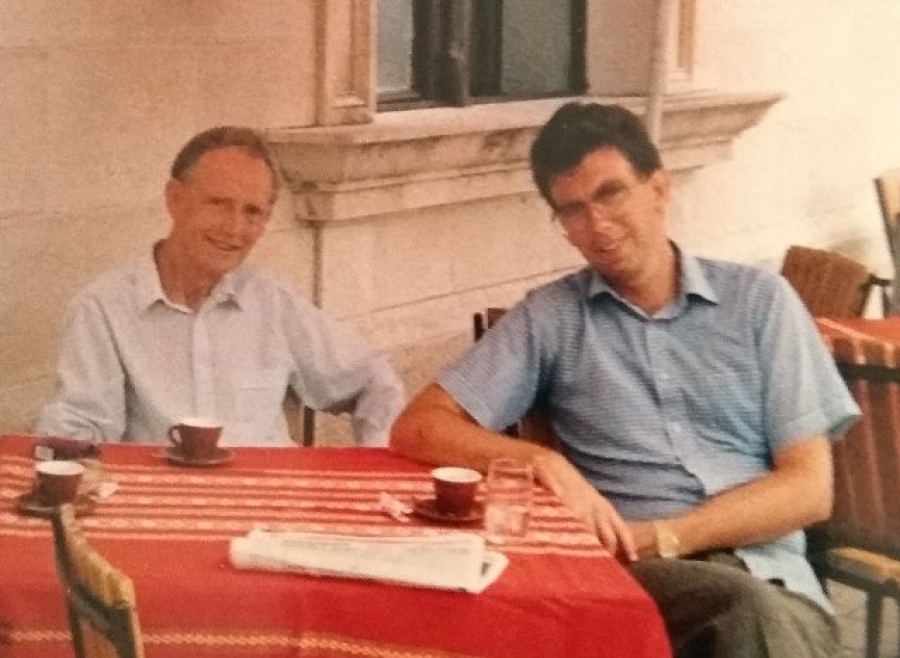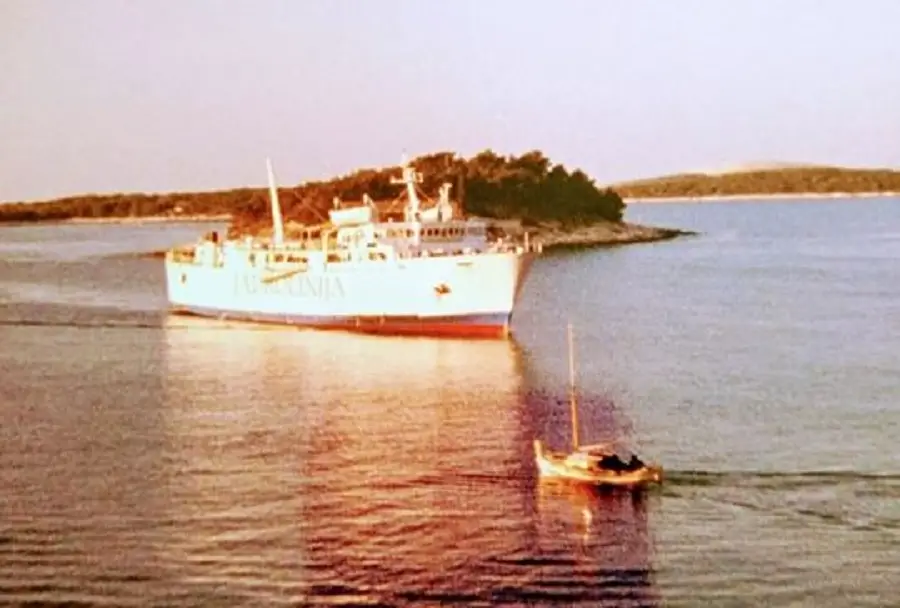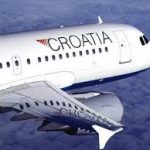There was plenty of lively social media debate in response to the latest TCN editorial this weekend – Could Digital Nomad Concepts Solve Croatian Winter Tourism Problem?
While Croatia has excellent tourism numbers in summer, the Adriatic coast almost shuts down in the winter, with an impact not just on its tourism offer, but also the quality of life of local residents. Recent digital nomad concepts such as Nomad Table – inviting digital nomads to meet and interact over dinner – fills a Split restaurant once a week; a meet-up and pitch night in Zagreb provides entertainment for 50 locals, expats and nomads; and the new Digital Nomad Valley Zagreb co-living concept already has over 50 applications in just 5 days for the winter.
None of these ideas are revolutionary, all are transferrable to mainstream tourism. So is it time to work on a strategic plan for a pilot project on a quality destination such as Split?
Of the many social media reactions, this comment in particular caught my eye.
Both the Amfora and now Riva in Hvar Town were open all winter plus a few restaurants and cafes looking after mainly American tourists for walking, history and the arts. That was up to 1991.
The comment was made by Martin Gannon, a Brit with his heart in Jelsa on Hvar. Martin worked as Operations Manager for Pilgrim Holidays, which was owned by Yugoslav airline JAT from 1986 to 1991. He told me he was busy with tourists 12 months a year covering Dubrovnik, Split, Hvar, Pula, Zagreb, as well as other destinations in former Yugoslavia.
And there were plenty of flights. This, in an era before the low-cost flight revolution. Martin kindly agreed to an email interview to tell us more about winter tourism as it once was.
1. Croatian tourism is very seasonal, with the bulk of tourism in the summer months and almost nothing in the winter months. But it was not always the case. You were Operations Manager for Pilgrim Holidays, owned by Yugoslav airline JAT from 1986-91. Tell us about winter tourism back then.
When I began working for Pilgrim Holidays owned at that time by JAT, we had a large fleet of aircraft. Being a self-management company (a type of workers cooperative similar to Waitrose, John Lewis in the UK) it was not an option to shut down services, or have staff on short-term contracts that they only worked in the summer, so ways were found to keep staff employed and aircraft to still operate. Yes services were reduced compared to the summer, but you could still get direct flights from the UK to Zagreb, Dubrovnik and Split, with connecting services to Pula and Zadar.
My role was to see how to increase the traffic of visitors from the UK to former Yugoslavia.
At the time Yugotours America was successfully bringing tourists from New York on regular DC10 services via Belgrade and Zagreb, staying in Dubrovnik Split and Hvar.
Tourists also came via UK-based operator Saga Holidays on coach tours from Vienna to Dubrovnik. I worked for Saga Holidays from 1980-1983 guiding coach tours of Americans and British tourists who were senior citizens.
With a good number of hotels open, I began developing short winter breaks, better known these days as city breaks, Events tourism in the form of conferences for big companies also took place. Surprisingly for a then Socialist country, religious events such as the St Blaise Festival in February in Dubrovnik, and the developing religious destination Medjugorje, were promoted and visited. At the time JAT had a lot of international flights to India, America, China and Australia, so I organised an option to add a few days. So instead of flying on from London via Zagreb or Belgrade straight on to Sydney, you could stay in Split or Dubrovnik for a few days at a cheap rate.
I also began developing health tourism, spas, dental and even a few skiing and adventure holidays, as well as wildlife spotting, especially in early Spring.
2. This was an era before the low-cost airline revolution. Tell us about the off-season flights to the Croatian coast. Who flew where, and how often?
Flight operations were firstly operated in the tourism off-season by Yugoslav Airlines and Inex- Adria (which became Adria). JAT operated mainly to Zagreb and Belgrade from London and Manchester and Glasgow. There were also flights direct to Ljubljana (for skiing) Dubrovnik and Split, as well as plenty of connecting flights to the coast from Belgrade and Zagreb. Inex- Adria operated from Manchester and Gatwick to Ljubljana and Maribor for skiing Holidays.
The other Airline Aviogenex owned by Yugotours operated from Gatwick to a number of Serbian Airports for skiing Holidays as well as charter services for conferences, mainly to Dubrovnik, where 200-300 delegates would be transported, in support of JAT where we could only supply one aircraft.
3. What was the profile of the winter tourist in Croatia? Which nationalities were the biggest visitors?
The main visitors off-season were Americans, as well as pilgrims for Medjugorje, mostly Irish and Spanish. We also flew in a very large number of Filipinos mainly going to Medjugorje, so we were involved with accommodation and transfers. The Americans were mostly retirees and were interested in history and the arts and food. These would be arranged in groups, and on Hvar Town, the old theatre was used to put performances on in English, from actors from around the then Yugoslavia.
4. Which were the most popular destinations? It is hard to imagine Pula, Split, Dubrovnik and Hvar as 12-month destinations.
The main destinations were Dubrovnik and Split, with add-ons to Pula and Opatija, as well as Plitvice (though this was mainly in Spring). Unfortunately Croatia is not well known for skiing though it has it, so sales were for Slovenia, and the Serbian resort of Kopaonik for skiing holidays, But these could be offered in two-centre holidays which we did a lot of in those days, a week in the mountains skiing then a few days or longer on the coast.
5. Swimming in winter is only for the diehard in Croatia. What did these tourists do on their winter visits?
The hotels used during the winter had indoor pools, and even some had limited spa facilities, so people would enjoy walking, history, and limited sports activities. The majority of these visitors were more senior and would be enjoying the milder coastal conditions. They would not be staying for a week, but up to 6 weeks or longer, as then it was cheaper to stay in a hotel than paying food and heating bills at home, in the UK or US.
You have to remember this was a socialist time so no one could be unemployed. It was better to operate the hotel at a small loss than have staff off, with the hope that the tourists would buy extra drinks, massages etc to cover the extra costs.

(Martin Gannon, left, taking a coffee break with his father in Jelsa in the 1980s)
6. Let’s take Hvar Town as an example. What was open in terms of hotels, restaurants and other tourist facilities?
Hvar Town had the Amfora Hotel open, which had an excellent indoor pool, a medical centre and a specialist health centre for lungs, breathing, and asthma conditions. It also had a sports fitness team, that helped visiting sports teams, such as water polo, football teams in training. And basically anyone who needed advice on sports fitness.
The Slavija Hotel (now Riva) was also open, though mainly for domestic tourism. A few restaurants and cafe bars were open, again most of these were not private, a few were. All museums and theatres were open and fully functioning. Boat excursions of course did not operate in the winter.
7. The Homeland War obviously changed everything. But with such a global boom in tourism 30 years later, why do you think Croatia no longer has the winter tourism it had back in the 1980s? What has changed?
The main reason why Croatia has poor tourism is because of the poor connectivity with flights, but this now has an opportunity to change with Ryanair turning up at Zagreb. But there are still a poor number of domestic flights during the winter. There is also a serious lack of showing the opportunities to visit Croatia off-season, and getting hotels to stay open. And sensible pricing and marketing. It does not need to be a vast number coming, but people who are willing to pay well, and enjoy themselves.
8. We will appoint you as the Croatian Minister of Tourism for this question. Given your experience of tourism back then and the world today, what steps would you take to reintroduce 12-month tourism to Croatia?
Look at marketing Croatia far better, showing its stunning scenery. People now are not looking just for sun and sea; they want something especially in the winter to challenge them, entertain them, enjoy wholesome food and wine and craft beers. These are better to see and visit in the winter than summer when it’s almost 40 degrees!!
Many hotels have good sports facilities so get football teams from around Europe over training, as they used to, Water polo teams as well. A popular sport now is cold water swimming, loads of exciting rivers in Croatia to try this challenge. Yoga holidays healthy food, spas, medical tourism especially dental work, and yes, skiing outside of Zagreb.
Maybe not so much now post-Covid but stlll companies will have conferences, so give them good deals, the delegates will come back themselves with their families when they see how stunning Croatia is. I know this as a fact as I used to rebook delegates onto our summer holidays when at Pilgrim.
Nature tours, environmental trips travelling around by train. Working holidays, helping plant trees in burnt areas. Projects to help rebuild areas damaged by earthquakes, some of these ideas will be for small groups but they are high-value tourists and most importantly will visit again and also tweet, and snapshot what they are up to, getting free publicity.
Interesting stuff, thanks Martin. If anyone else has memories or a contribution of Croatian winter tourism as it once was, then please contact us at [email protected] Subject Winter Tourism.
Martin has contributed to TCN before with a really interesting account of tourism restarting after the Homeland War, a different era. Read more in Restarting Croatian Tourism from the UK After the Homeland War: a Travel Agent’s Tale.









